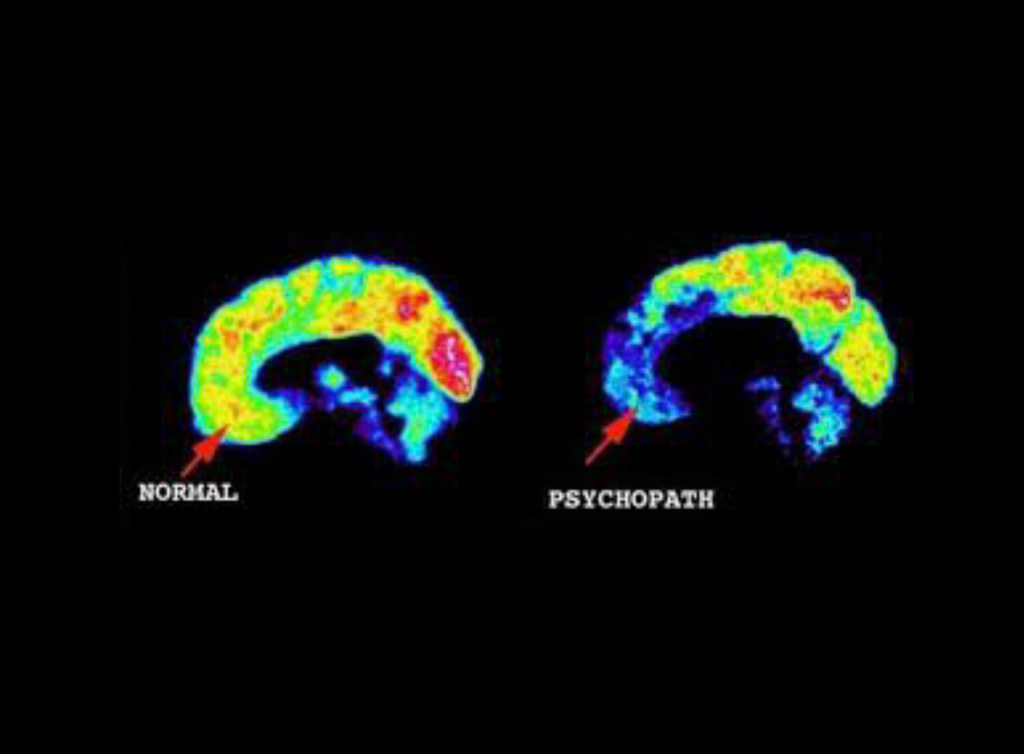
“To this day, I don’t know what started the killings. The person to blame is sitting right across from you. It’s the only person. Not parents, not society, not pornography. I mean, those are just excuses.”1 Jeffrey Dahmer was a serial killer known for cannibalism and the dismemberment of his victims. He specifically targeted men. However, all the men were of various ages and races. There are many psychological factors that led to the lifestyle of this “Milwaukee Cannibal.”2

On May 21, 1960 in Milwaukee, Wisconsin the infamous Jeffrey Lionel Dahmer was born. From a very young age, he held a fascination with dead animals.3 His father, Lionel, was a research chemist who practiced bone bleaching on the remains of animals that Jeffrey and he found underneath their home. Jeffrey was “oddly thrilled” by the sound the bones would make. Dahmer was curious as to what would happen if chicken bones were placed in bleach. Lionel was very pleased by Jeffrey’s curiosity, so he demonstrated how to safely bleach and preserve animal remains. As a father-son activity, they would both bleach the connective tissue and hair off animal corpses. Jeffrey was showing signs of observational learning—observing and modeling another individual’s behavior, attitudes, or emotional expressions—because he wanted to do what his father did. He began collecting butterflies and dragonflies. Then, he went on to collecting the carcasses of animals that he found along road sides. Jeffrey would dismember these animals and store their parts in a jar located in the family’s toolshed. He was curious as to how animals fitted together.4 Jeffrey decapitated the carcass of a dog while nailing its body to a tree and impaling its skull on a stake with a wooden cross. With that being said, many would think that Dahmer had some sort of psychological disorder, and they would be correct.5
Typically, when undergoing the process of puberty, boys transitioning into young men tend to go out of their comfort zone and become more socially engaged with their peers and community. This was not the case for the notorious Milwaukee Cannibal. Dahmer was unfortunately part of the small percentage of people who suffered from psychopathy, scientifically known as antisocial personality disorder (ASPD). Those diagnosed with ASPD tend to lie, break the law, act impulsively, and lack regard for their own safety or the safety of others. There is a chromosome abnormality that is primarily discovered in men. It fosters a strong inclination to kill during puberty. Psychopaths never fully develop the sense of attachment or belonging to the world. This leads psychopaths to kill without being able to understand or share the feelings of another human being.6 “I don’t even know if I have the capacity for normal emotions or not because I haven’t cried for a long time. You just stifle them for so long that maybe you lose them, partially at least. I don’t know.”7 There are two areas of a psychopath’s brain that are both less responsive as well as smaller than the normal, every day human being’s brains. These two areas of the brain are called the orbitofrontal cortex and the amygdala. When there is low activity in the orbitofrontal cortex, there are fewer usual or typical behaviors, some of which would involve consuming alcohol, an increase in engagement with sexual intercourse or activities, and heightened state of aggression. The amygdala is primarily involved with the emotions of fear and deep regret.8 “Yes, I do have remorse, but I’m not even sure whether it is as profound as it should be. I’ve always wondered why I don’t feel more remorse.”9

As children, serial killers are known to have had encounters with some forms of abuse. In Dahmer’s case, the form of his abuse was molestation, which was executed by a neighborhood boy.10 However, Jeffrey consistently denied that this horrific encounter ever occurred. There is a high probability that the reason why young Jeffrey would consistently deny these allegations was due to embarrassment or stored up trauma. This may have sparked the Milwaukee Cannibal’s reasoning for targeting homosexual males. A serial killer typically has some form of motivation for murdering.11 A few of these motivations may include thrill seeking, money, a sense of power or domination, and the desire to rid the world of evil.12
Dahmer had started daydreaming about controlling and subjugating a conforming male partner. “It’s a process, it doesn’t happen overnight when you depersonalize another person and view them as just an object. An object for pleasure and not a living breathing human being. It seems to make it easier to do things you shouldn’t do,” Jeffrey stated.13 He had become completely overwhelmed with strong sexual desires for a neighborhood male jogger. Jeffrey would hide himself alongside the route of the male jogger in hope of making his first kill. Unfortunately for the Milwaukee Cannibal, the male jogger did not run on his normal route, forcing Dahmer to move on.14
It was not until a handful of weeks after his graduation in 1978, that Dahmer resurfaced and committed his first murder. Dahmer’s first victim, a hitchhiker, was an eighteen-year-old young male named Steven Mark Hicks. Jeffrey enticed Hicks through his clever charm, giving Hicks the impression that the two of them would share a few alcoholic beverages together. After much drinking at Dahmer’s house, Hicks felt the urge to go home before becoming unaware of the actions that were soon to occur. However, Dahmer was opposed to Hicks going home. In response to that thought, Jeffrey violently and aggressively knocked Hicks over the head twice with a ten-pound dumbbell. Once Hicks fell unconscious, the Milwaukee Cannibal strangled him to death and stripped him of his clothing. He then began to masturbate to the cold corpse on the floor as he wickedly stood right above it. The following day, Dahmer dragged the chilling corpse down to his basement, where he dismembered the body. He pared the flesh from the bones, dissolved the flesh in acid and proceeded to flush it down the toilet. Lastly, before scattering the bones in the woods behind his house, he took a sledgehammer and crushed them into small shards.15

Following the murder of his first victim, Steven Mark Hicks, Dahmer continued on to become a serial killer with a strong manipulating skill. “I made my fantasy life more powerful than my real one.”16 After discovering several Polaroid photos—there were a total of 74—of Dahmer’s victims taken over the years, he was arrested on July 22, 1991. Thereafter, a more thorough search was conducted by the police. They confiscated several body parts of various deceased male human beings, some of which included severed heads, skulls, human hearts, arm muscle, torsos, organs and flesh, skeletons, hands, genitals, and mummified scalp.17 During an interview with Inside Edition, Dahmer stated, “I probably would still be committing these crimes if this hadn’t happened, there’s no doubt I probably would be, I can’t think of anything that would have stopped me.”18
- Inside Edition, “Inside the Mind of Jeffrey Dahmer: Serial Killer’s Chilling Jailhouse Interview,” YouTube video, November 27, 2018, https://www.youtube.com/watch?v=iWjYsxaBjBI. ↵
- Salem Press Biographical Encyclopedia, 2019, s.v. “Jeffrey Dahmer,” by Jenephyr James. ↵
- Lorna Benson, “Animal Cruelty may be Sign of Deeper Human Problems,” MPRnews (website), July 6,2006, https://www.mprnews.org/story/2006/07/06/animalkillers. ↵
- The Scribner Encyclopedia of American Lives, 128-130. Vol. 4: 1994-1996, 2001, s.v. “Dahmer, Jeffrey Lionel.” ↵
- Nathan Carlin, “Confessions and Forgiveness: A Pastoral Reading of a Father’s Son by Lionel Dahmer,” Pastoral Psychology, vol. 60. no. 3 (2011): 382. ↵
- Allen A. Bartolomew, “Psychopathy, Sex, Chromosome Abnormality, and the Criminal Law,” Adelaide Law Review (1972): 275-276. https://www.austlii.edu.au/au/journals/AdelLawRw/1972/2.pdf. ↵
- Tom Philbin, I, Monster: Serial Killers in Their Own Chilling Words (Prometheus Books, 2011): 36. ↵
- Luiz Pessoa, The Cognitive-Emotional Brain: From Interactions to Integration (Cambridge, Massachusetts: The MIT Press, 2013): 10-11. ↵
- Inside Edition, “Inside the Mind of Jeffrey Dahmer: Serial Killer’s Chilling Jailhouse Interview,” YouTube video, November 27, 2018, https://www.youtube.com/watch?v=iWjYsxaBjBI. ↵
- Richard Tithecott, Of Men and Monsters: Jeffrey Dahmer and the Construction of the Serial Killer (Madison: University of Wisconsin Press, 1997), 80-81. ↵
- St. James Encyclopedia of Popular Culture, 499-502. Vol. 4. second ed., 2013, s.v. “Serial Killers,” by Phillip L. Simpson. ↵
- Dara C. Drawbridge, “Serial Killers: The Psychosocial Development of Humanity’s Worst Offenders,” Homicide Studies, vol. 20. no. 4 (2016): 339-341. ↵
- Inside Edition, “Inside the Mind of Jeffrey Dahmer: Serial Killer’s Chilling Jailhouse Interview,” YouTube video, November 27, 2018, https://www.youtube.com/watch?v=iWjYsxaBjBI. ↵
- Inside Edition, “Inside the Mind of Jeffrey Dahmer: Serial Killer’s Chilling Jailhouse Interview,” YouTube video, November 27, 2018, https://www.youtube.com/watch?v=iWjYsxaBjBI. ↵
- Catherine Purcell and Bruce A. Arrigo, The Psychology of Lust Murder: Paraphilia, Sexual Killing, and Serial Homicide (Amsterdam: Academic Press, 2006), 76-77. ↵
- Inside Edition, “Inside the Mind of Jeffrey Dahmer: Serial Killer’s Chilling Jailhouse Interview,” YouTube video, November 27, 2018, https://www.youtube.com/watch?v=iWjYsxaBjBI. ↵
- Federal Bureau of Investigation, “Jeffrey Lionel Dahmer,” https://vault.fbi.gov/jeffrey-lionel-dahmer/jeffrey-lionel-dahmer-part-01-of-19/view (accessed September 17, 2020). ↵
- Inside Edition, “Inside the Mind of Jeffrey Dahmer: Serial Killer’s Chilling Jailhouse Interview,” YouTube video, November 27, 2018, https://www.youtube.com/watch?v=iWjYsxaBjBI. ↵




54 comments
Makayla Soto
First off, congrats on the award! This article is so well written and informative, and I find really interesting. My major is forensic science criminology so reading this article I got a lot of knowledge from. Jeffrey Dahmer is by far one of the worst serial killers ever, so trying to understand the part of his mind about cannibalism and such was hard. Thank you for giving us background knowledge about the part of the brain that triggered these certain things.
Ana Barrientos
I’ve heard of Jeffrey Dahmer before and most recently he is being talked about because of the series that Netflix came out with. I didn’t know he had ASPD, until now it’s crazy how it affected so much of his thinking and behavior. It is terrifying that we don’t know what kind of person walks by us, they could be a serial killer and we wouldn’t know. I feel bad for his father because he probably felt his son was just into what he was into and never would’ve thought his son would be a serial killer. Overall, great article!
Shecid Sanchez
Reading this article made me want to watch the documentary about Dahmer. Its always been weird to me that’s dad never noticed his weird obsessions and wondered if he had psychological issues. There were signs leading up to his murders and yet no one noticed. This is another story that makes me sad because it could’ve been a higher possibility of this not to happen if mental heath would be taken as seriously as it is.
Velma Castellanos
Congratulations on your award of crime. Getting in depth of his mind really showed how sickening of a man he was. I liked the approach you took in explaining his background and how he got to where he got. I find the father and son activity was not the best idea to get a child into at such a young age. I was also baffled how the father never noticed his unhealthy obsession with corpses especially those of animals on the side of the road. Overall this was a great read.
Paula Ferradas Hiraoka
What an interesting article! The first lines caught my attention immediately. It’s amazing but at the same time scary how we are surrounded by different humans and who knows if maybe one is a psychopath! I didn’t knew who has Jeffrey Dahmer but this article and how the author describes his story leave me speechless. Overall, amazing article and congratulations on your award!
Victorianna Mejia
This article is phenomenal! It had me captivated from the very beginning. I have always had an interest in the psychology of serial killers, and it was a nice extra that is included in this article. I had known a little bit of Jeffery Dahmer but reading about his childhood to his first victim struck a different type of nerve. I feel like he almost didn’t get a chance to not become a serial killer. His father taught him about bone bleaching and later with his childhood trauma. I wonder if there is more research on ASPD and how to control the negative urges that are associated with it. Great article, and congratulations on the award! It’s well deserved!
Irene Urbina
Dahmer’s case has always been one of the most interesting serial killers’ cases, in my opinion. It is so shocking to see that his father never saw his obsession for corpses as something weird and concerning, rather saw it as an opportunity to get closer with him and show him how to preserve them, without knowing what the future awaited. This article made a great job describing how his mind worked and the quotes added to that chilling factor.
Hoa Vo
Thank you for putting your effort into this interesting and thrilling article. It helped me clarify the mechanisms of his action: the antisocial personality disorder (ASPD), the function of the orbitofrontal cortex and the amygdala, and their effect on his abnormal thinking, and behaviors. For me, the story of this serial killer is more tragic and sad than scary. After all, he was also a victim.
Dominique Rodriguez
this article was very interesting to read. Getting in depth of a psychopaths mind is crazy. its scary how we have psychopaths around us and we can literally be [passing by one without even knowing. I knew who Jeffrey Dahmer was and what he would do to his victims i would watch the documentaries of him. this article listed the facts of what caused Dahmer to do these things. i never knew what a normal and a ASPD brain looked lioke its crazy how people who have ASPD have a different development in their brain.
Edward Cerna
This was such a captivating article and the author did a fantastic job on making the story really interesting and keeping the reader engaged. I had known of Jeffrey Dahmer because he is a famous serial killer but I had not known much about him. This article really helps you get inside the mind of one of the most horrific serial killers in United States history. I like how the article began with a quote as is really grabbed my attention. This was an amazing article.